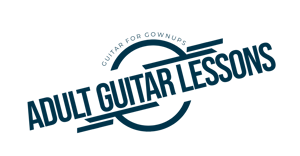Have you ever seen those guys on stage with a million or so effects pedals laid out at their feet? Patch cables slithering like a bed of snakes through a maze of distortions, delays, choruses, flanges, wah’s, envelope filters, octave dividers, EQ’s, tuners, and the list goes on.
How do they make sense of all those stomp boxes? How long does it take just to plug them in before a gig? Can you really use all of them in the course of a night? Heck, they even make large, football field size, pedal boards so you can attach a cornucopia of pedals with Velcro, and power them all from one source. Do you really need all those sounds?
Okay, I have to confess, there was a time, years ago, that I was a “stomp box” junkie and bought every new fangled pedal that came out. Yes, I had a pedal board. And yes, the rest of the band was set up and ready for sound check before I had all those pedals hooked up and tweaked!
Then came the digital age and everything changed. Legions of engineers designed pedals with a plethora of effects built into a compact package. Suddenly the need to acquire a multitude of various stomp boxes was eliminated.
Even so, many guitarists still prefer the use of analog stomp boxes over their digital counterpart. Talk to ten different guitar players and you’ll get ten different answers as to the merits of one over the other.
Here are some of the ups and downs of multi-effects guitar processors.
Ups
1. Variety – Multi-effects processors have a ton of cool effects built into one unit. The tonal possibilities are almost limitless. In fact, most will have more sounds available than most of us will ever use!
2. Portability – Gone are the days of needing to carry a slew of stomp boxes. Just take one unit out, plug it in, and start playing.
3. Affordability – Although some multi-effects pedals can get pricey, when compared to the cost of purchasing an equal number of stomp boxes to produce the same sounds, they are usually a bargain.
Downs
1. Sound Quality – Many purists would argue that you just can’t get the sound out of a digital pedal that you can a stand alone analog stomp box. The truth is though, that great strides have been made in the quality of digital pedals, and some players say they can’t hear the difference.
2. Complexity – With many multi-effects processors there is a bit of a learning curve – with some it can pretty steep. The flip side is that most will come with factory pre-sets that will get you up and running quickly, and sometimes those are all you’ll ever need.
3. Reliability – Many multi-effects processors will hold up over the long haul, but some can be a little flimsy. Also, if the unit breaks, you are completely shut down. With stomp boxes, if one pedal breaks, just pull it out and keep using the others.
Over the years, I have spent a small fortune on stomp boxes, but now most of them are in a closet. This is not a product endorsement, but when I discovered the Boss ME-50 multi-effects pedal, I thought I died and went to heaven. It’s an extremely user friendly pedal with just the main few effects that you really “need” to pull off a gig. They sound great and are durable for stage use. Perfect for an old “road dog” like me.
Regardless of which direction you go, take the time to consider the differences between analog stomp boxes and digital multi-effects units before making the investment. Visit your local music store and try some out in advance – your tone, and your wallet, will thank you!
Keep on Picking!



